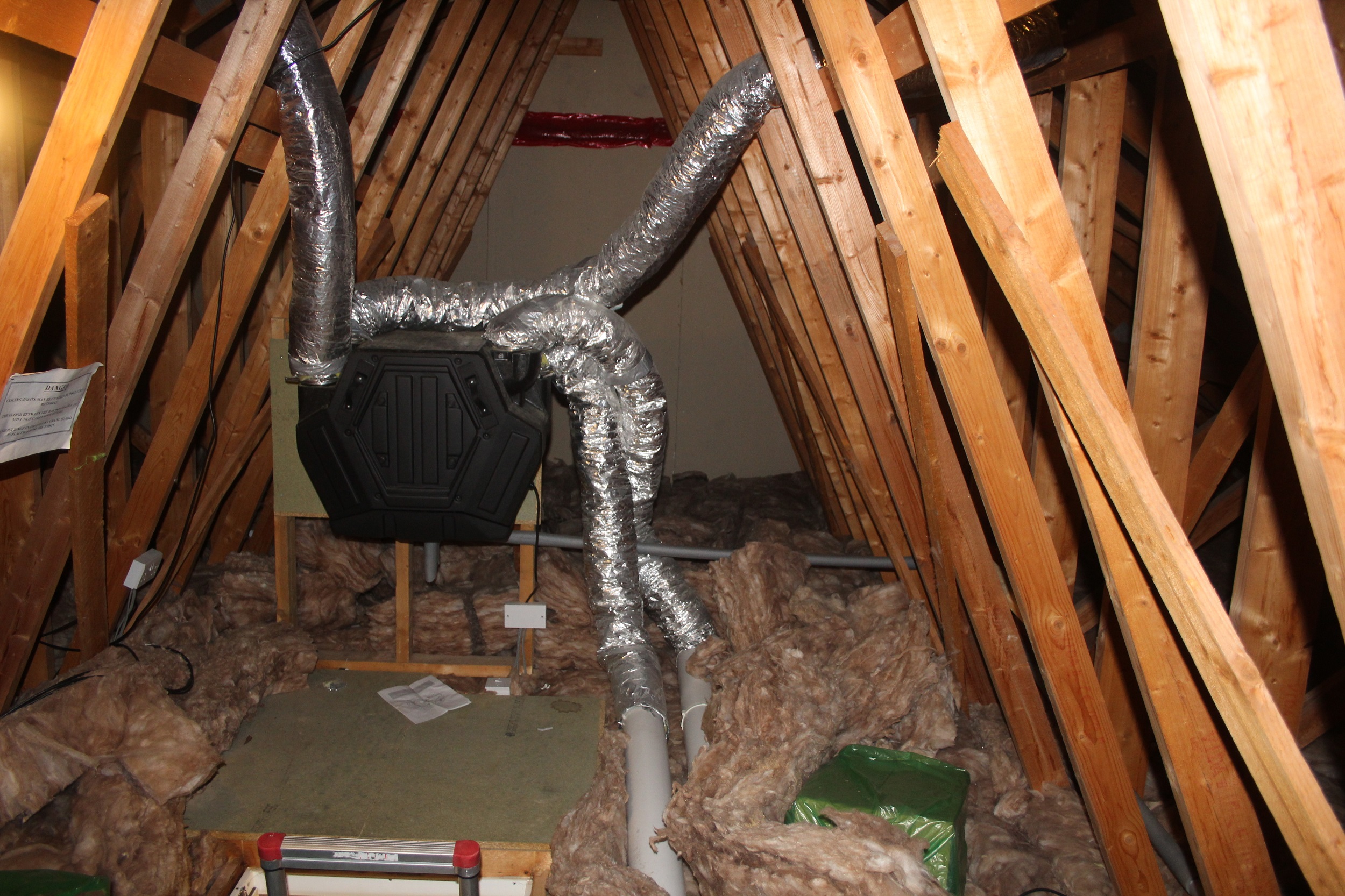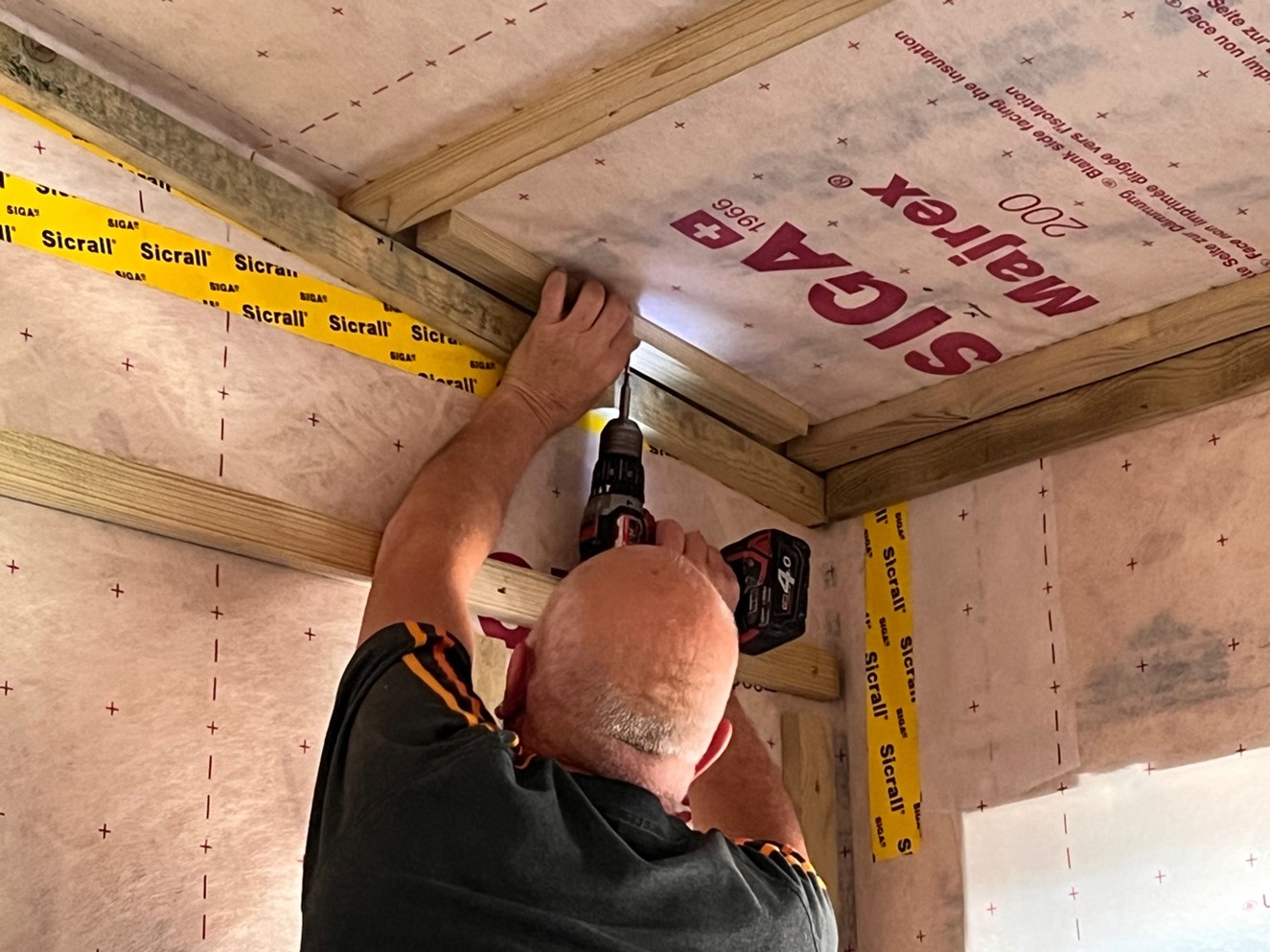
A development of Passivhaus dwellings near completion
Until now, Passivhaus has remained a voluntary standard in the UK, entirely separate from the national Building Regulations regime.
The Scottish parliament's proposal to mandate that all new housing effectively achieve the standard therefore represents a major shift in policy on energy efficiency in buildings – but one for which the construction industry may not be ready.
Legislation introduced to tackle energy issues
In January 2023, the Scottish parliament announced its intention to require all new-build housing in Scotland to meet the equivalent of the Passivhaus standard.
MSP Alex Rowley had originally put forward the Domestic Building Environmental Standards (Scotland) Bill to address the ongoing climate crisis as well as fuel poverty, which now severely affects 20% of Scots.
Rowley's proposal also emphasised the chronic performance gap between the designed energy efficiency of new housing and its actual performance once built, a shortfall estimated to be 45–60% on average.
Rather than progressing Rowley's bill, the Scottish parliament decided to implement secondary legislation to introduce the regulations by this December, in order to bring them into effect more expediently.
Once in force, the regulations will essentially lift and repackage the established Passivhaus standard in the form of national building standards, which are currently under development and technical consultation.
Standard sets stringent performance criteria
The Passivhaus standard represents the highest benchmark in energy-efficient construction.
To attain it, a building must be designed, tested and certified to meet stringent performance criteria set by the Passivhaus Institute in Germany. Designing to the standard is a rigorous and involved process, and must take into account the building's form, orientation, solar gain and other factors.
A Passivhaus building is designed and constructed to consume minimal amounts of operational energy, which in practical terms means it will have high levels of insulation, comprehensive airtightness detailing and well-designed mechanical ventilation with heat recovery (MVHR).
The new Scottish equivalent standards will mirror the established Passivhaus design principles and performance requirements. Importantly, compliance will need be demonstrated at Building Regulations approval stage for new-build residential applications, with the aim of closing the housing energy performance gap.
Cost premium among concerns about policy
Reaction to the proposed standards has been largely positive. Proponents of Passivhaus itself are, understandably, enthusiastic and the majority of respondents received Rowley's bill favourably during public consultation in 2022.
But some commentators, including Homes for Scotland, have raised practical concerns. Some are apprehensive over the cost implications and the construction industry's readiness to comply with the new standards.
At first glance, there is some validity to these concerns. The sector recognises that building to Passivhaus standard incurs a cost premium over an equivalent house conforming to current Building Regulations.
The Passivhaus Trust UK's 2019 report on construction costs placed this premium at around 8%. This uplift derives from the greater volumes of insulation material used and the installation of MVHR, among other factors.
The counter-argument, though, is that the initial capital costs of Passivhaus construction have fallen with time and increased uptake. Between 2010 and 2024, Passivhaus space in Europe has grown exponentially from less than 0.5m to almost 3m square metres, and at the time of writing more than 200 Passivhaus schemes have been built throughout the UK.
The trust's 2019 research found that the average premium had declined markedly since 2010 as the volume of Passivhaus units being built increased; Exeter City Council, for example, reduced the cost premium on its projects down to as little as 4% according to the report.
Proponents maintain that this trend will naturally continue as the industry gains experience in building to the standard and economies of scale emerge.
However, this is a rather simplistic view, failing to take into account numerous other complications – for instance, the economic effects of the pandemic, military conflict and high inflation, all of which have occurred since 2019.
'Some are apprehensive over the costs, and the industry’s readiness to comply with the new standards'
Doubts voiced about supply chain readiness
More specifically, commentators have also voiced fears over supply chains and the availability of materials required for mass Passivhaus construction once the new standards come into force.
One view is that sudden increased demand for materials such as insulation will lead to shortages and subsequent price increases.
Added to this are general supply-side weaknesses.
First, the UK relies significantly on imports for construction materials. Second, with exceptions such as some airtightness materials and MVHR units, very few finished components necessary to Passivhaus construction are manufactured in the UK. To date, for instance, there is only one Passivhaus-certified window system produced domestically.
Advocates and critics of the policy alike make the case for prioritising domestic supply chains to mitigate supply-side risks, and reduce the carbon footprint of importing materials.
Yet the dialogue on how to do so in practical terms seems to falter at this point. Without measures to boost domestic manufacturing, the worry is that the sector is liable to remain vulnerable to supply shortages or disruptions, which will further compromise Passivhaus construction and affordability.
Professionals and tradespeople already lacking
The skills deficit in the UK construction sector is arguably the most critical obstacle. This deficit is pronounced on both the professional and the trades side.
According to the Passivhaus Institut directory, there are 647 certified Passivhaus designers and consultants in the UK, of whom 119 are based in Scotland.
While this may seem a considerable number, it amounts to just a tiny proportion of overall construction professionals. Therefore, a large number of architects, building inspectors and related professionals in Scotland will somehow have to upskill rapidly if they are to function under the new standards.
This problem is more acute given the dearth of tradespeople in the UK construction workforce. Aside from this general shortage of workers, building to the Passivhaus standard itself demands a particular level of knowledge, skill and construction quality.
Yet the directory lists only 111 certified tradespeople in the UK, of whom 40 are in Scotland. Put bluntly, there are simply not enough construction workers capable of building projects to the standard today.
From my experience as a building surveyor who has been routinely involved in Passivhaus projects, the level of construction quality required for the standard is generally just not seen in the field.
This is apparent from surveying defects on newly built or refurbished residential properties, or the fact that even seasoned, competent contractors are still grappling with the basics of thermal bridging and airtightness, let alone being capable of dealing with these at the advanced level of Passivhaus.
With an underpopulated and deskilled workforce, how can the more stringent standards of Passivhaus be achieved on a mass scale?
'There are simply not enough construction workers capable of building projects to the Passivhaus standard'

The results of a severely deskilled UK workforce are frequently encountered in practice, as illustrated in this poorly-installed MVHR system and loft insulation. © Conker Conservation Ltd
Training offered to redress skills shortfall
The Passivhaus Trust UK has acknowledged the issue and responded by proposing a transition period over the coming years. This should allow industry and building control bodies to adjust to the change in regulations.
The trust is also prioritising training, providing free Passivhaus courses to all architecture students studying for accredited degree programmes, and may extend this to students on other programmes such as surveying and engineering.
As for practical training, the trust and other initiatives such as Built Environment – Smarter Transformation (BE-ST) offer a range of practical Passivhaus courses for tradespeople.
Encouraging and nurturing the next generation of entrants to the sector is entirely the right approach. Still, there remains a significant amount of ground to make up, both in recruiting new entrants and training up the existing workforce en masse.
At present, it appears that there are only a limited number of courses; far more must be made accessible to those in the trades if training is to have a discernible impact.

The human resource problem: the construction sector needs competent and skilled tradespeople to enable Passivhaus delivery © Conker Conservation Ltd
Longer transition could help ensure compliance
So is Scotland's approach of mandating a Passivhaus-equivalent standard a much-needed jolt to improve energy efficiency in housing and contend with broader environmental and societal problems? Or is it too much too soon for the industry?
The answer is probably yes – on both counts.
The reported energy performance gap and rates of fuel poverty are clearly appalling. It is right to say that a business-as-usual approach of tweaking individual requirements in the Building Regulations is no longer sufficient.
We should therefore be championing major improvements to energy efficiency in housing. Yet a number of issues, especially the shortage of workers, present serious challenges in building Passivhaus housing at scale.
A transition period allowing the Scottish construction industry to adjust is inevitable – and, I suspect, may need to be extended longer than proponents would like.
In any event, there needs to be a massive drive to recruit and train the construction workforce, with particular emphasis on leading new entrants to the trades.
Without the skilled tradespeople on whom we rely to construct buildings – Passivhaus or otherwise – from the ground up, the risk is that any top-down government decree will be rendered unviable.
Gavril Postnikov is a building surveyor at Conker Conservation
Contact Gavril: Email
Related competencies include: Construction technology and environmental services, Design and specification, Sustainability

